Thanksgiving Day
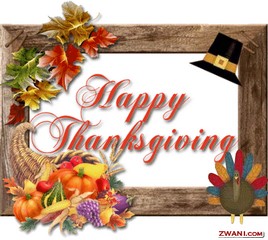
Talk Lab English Club members filled their plates with huge helpings of information about the Thanksgiving holiday at the Sunday, Nov. 20, meeting – just in time for the American celebration, which this year falls on Thursday, Nov. 24.
A crossword puzzle, multiple-choice quiz, computer video of a Thanksgiving parade and a series of photographs all yielded lessons in history and vocabulary as well as insights into American culture.
Thanksgiving is one of the most popular holidays in the United States and one of the oldest. Although it has evolved over the years, the main themes remain the same – being together with family, friends and neighbors to give thanks for the bounty of food, health and freedom.
The hallmark of the celebration is the Thanksgiving dinner, which is prepared and eaten at many American homes and usually features turkey, stuffing, cranberries, sweet potatoes or yams, various green vegetables and seasonal pies, such as pumpkin. But, of course, there also are parades and sporting events, especially football games.
Thanksgiving is steeped in American history. Although earlier American explorers and settlers organized celebrations to give thanks for their survival, today’s popular notion of Thanksgiving is rooted in the story of the Pilgrims, a religious minority who left England in 1620 in search of religious freedom in the North American colonies. The 102 passengers aboard the Mayflower aimed to settle near the mouth of the Hudson River – modern day New York City – but the difficult 66-day crossing of the Atlantic Ocean took them to Cape Cod, Massachusetts, where they established a colony called Plymouth.
By spring of 1621, about half of the Pilgrims had died, mostly from starvation, scurvy, contagious diseases, malnutrition and exposure to the brutally cold winter. The Pilgrims, however, were being watched by the original inhabitants of North America, the people who today are known as American Indians or Native Americans. The first Indian to greet the Pilgrims was an Abenaki tribesman named Samoset. Soon, a Pawtuxet named Squanto, came out of the forests to help the Pilgrims survive by teaching them how to fish and grow maize, a type of corn. Such help was even more remarkable because Squanto had once been kidnapped by Englishmen and sold into slavery to the Spanish. Still, he was willing to help these new English settlers survive in a land unfamiliar to them.
In November of 1621, the Pilgrim governor William Bradford proclaimed a thanksgiving feast to celebrate the successful harvest of corn. He invited local Indians and the feast lasted for three days.
Thanksgiving celebrations continued to be organized in America for many decades but there was no official national holiday until President Abraham Lincoln created such a day in 1863. Lincoln had been persuaded by Sarah Joseph Hale, an editor and writer, who had been campaigning for 36 years for the establishment of a national day of thanksgiving. Lincoln agreed in hopes that the day would help salve some of the anguish being caused by the American Civil War.
While Lincoln established Thanksgiving on the last Thursday of every November, some Novembers have four Thursdays and others have five. So, in 1940, President Franklin D. Roosevelt anchored the holiday to the fourth Thursday of November in 1940 at the request of retail businesses. The reason: to create a longer Christmas shopping season that would help merchants recover from the Great Depression of the 1930s.
Indeed, the Thursday holiday is followed by the launching of the Christmas sales season on the very next day. American shoppers rush to the stores beginning on early Friday to take advantage of the deep discounts. That Friday has become known as “Black Friday,” a reference to the black ink traditionally used by accountants and bookkeepers to denote business profits instead of the red ink that indicates revenue loss.
Over the years, America’s Thanksgiving traditions have included:
~ Parades, especially the largest – the annual Macy’s Thanksgiving Day Parade in New York City. The first such parade was organized in the 1920s by Macy’s department store employees, many of whom were immigrants wanting to show their appreciation for their new lives in America. The parade, still organized by volunteers, now takes 3 hours to complete and extends for 2.5 miles, and features 800 clowns, 27 floats, 1,600 cheerleaders and 11 marching bands. More than 3 million people come out to watch the procession and another 44 million view it on TV.
~ Sporting events, especially the National Football League game featuring the Detroit Lions, a professional team that organized the first such Thanksgiving Day game in 1934.
~ Eating turkey. The National Turkey Federation estimates that Americans eat 46 million turkeys on Thanksgiving, which is about one-fifth of the 235 million produced each year. About 90 percent of Americans eat turkey on the holiday. Since the mid-1900s, American presidents and many state governors have created another Thanksgiving tradition, that of pardoning some turkeys from being eaten. The lucky birds are then retired to special historical farms or other public places to live out their lives as fortunate pensioners.
Whether or not you celebrate the Thanksgiving, the American Peace Corps volunteers living in Kherson extend a wish of holiday spirit to everyone. Hope you all have a happy, healthy and bountiful season and a wonderful start to the coming New Year! More photos.
Historical reenactors for Thanksgiving in Plymouth, Massachusetts

A family giving thanks before enjoying the Thanksgiving dinner
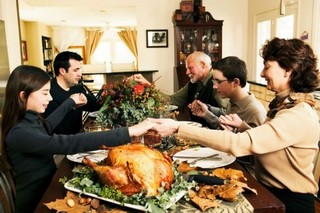
Scene from the huge Thanksgiving Day Parade in New York City
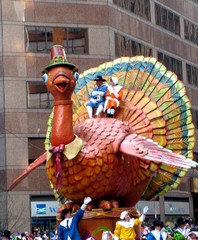
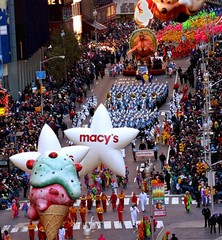

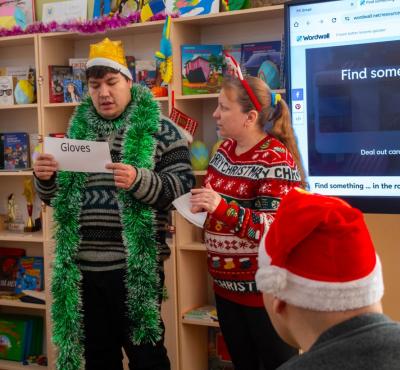
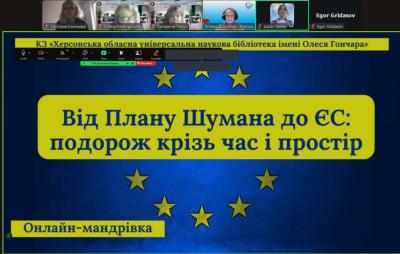
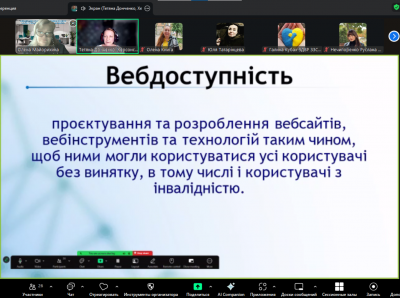
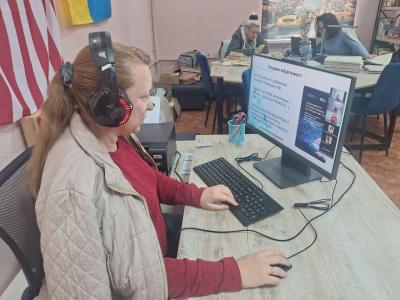
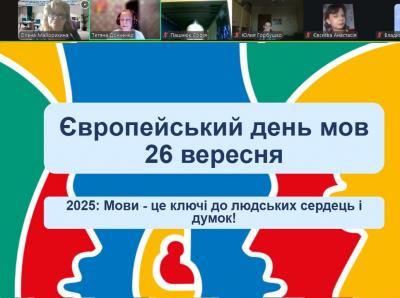
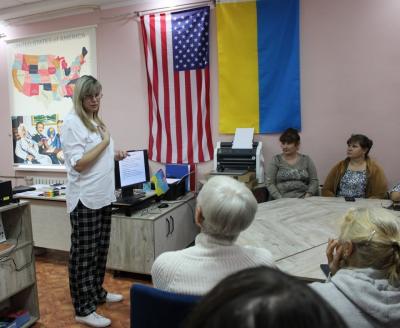
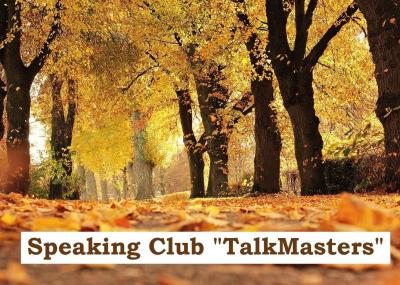
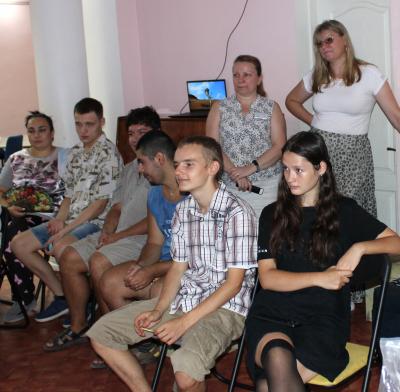
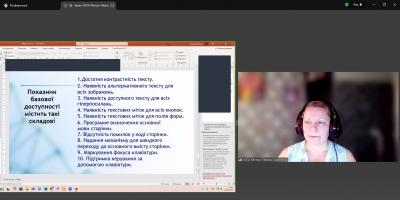

Comments